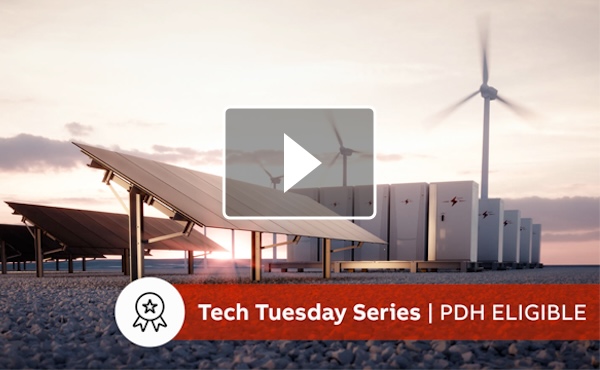What are battery energy storage systems?
The battery energy storage system's (BESS) essential function is to capture the energy from different sources and store it in rechargeable batteries for later use. Often combined with renewable energy sources to accumulate the renewable energy during an off-peak time and then use the energy when needed at peak time. This helps to reduce costs and establish benefits for the user. BESS offers flexibility in grid connection and can operate in local mode when the grid is unavailable.
Where is battery energy storage used?
- Renewables – Battery energy storage aligns solar and wind generation peaks with demand peaks.
- Residential and Commercial – lower energy costs, improves load factor, and manages demand peaks.
- Utility distribution grid – balances fluctuating demand at peak hours while reducing grid overload.
- Industrial loads – provides backup power for critical loads, improves load factor, and manages demand peaks.
- Electrification of transportation – reduces demand on the grid and enables fast DC charging without increasing demand charges.
Why leverage battery energy storage solutions now?
- Technology - Enhanced battery efficiency with improved storage duration. Decentralized technology to help move away from total grid dependence.
- Cost - Benefits from a declining installation cost have made these systems more economical. Plus, added savings through peak shaving and a declining cost in the overall battery system per kWh.
- Environmental - Federal environmental initiatives and tax incentives are key influencers in meeting net-zero clean energy goals by simultaneously helping to move towards more sustainable energy generation.
Primary components of battery energy storage systems
Battery
The battery is the fundamental element of an electrical energy storage system.
Battery management system (BMS)
The Battery Management System (BMS) ensures and keeps track of the internal performance of the battery cells, system parameters, and potential hazards. The BMS data is internally collected and used to monitor and maintain an optimum level of charge without over changing the battery, helping to prolong the lifecycle of the system.
Power conversion/conditioning system (PCS)
The power conversion system is designed to convert the direct current produced by batteries, or the battery system, into alternating current that can be used for power consumption on the grid. During off-peak time, the PCS takes the energy from the grid to store in the BESS. In essence, the PCS's main function is to convert the power between the energy storage system and the grid, and vice versa. It accomplishes that by offering a bi-directional flow from DC-AC and AC-DC. See how our ABB OEM products flourish here: Download BESS brochure
The battery energy storage system illustration below consists of batteries, a battery management system, an inverter, controls, and a transformer.

Related webinars

Battery energy storage going to higher DC voltages: a guide for system design
The evolution of battery energy storage systems (BESS) is now pushing higher DC voltages in utility-scale applications. Industry experts are forecasting phenomenal growth in the industry with annual estimate projections of 1.2 BUSD in 2020 to 4.3 BUSD in 2025.
Speaker: Allen Austin, VP Renewable Energy, and E-Mobility Division, JD Martin Company

Supporting global megatrends with energy storage
Global megatrends are shifting towards decarbonization, decentralization, and digitalization. To support these trends, energy storage solutions (ESS) will be a critical component within the grid of the future.
Speaker: Alexandra Goodson, Global Product Marketing Manager, Energy Storage Solutions and E-mobility
References
—
Ask an Expert
Complete the form and we will have an ABB specialist contact you regarding our products and solutions.
